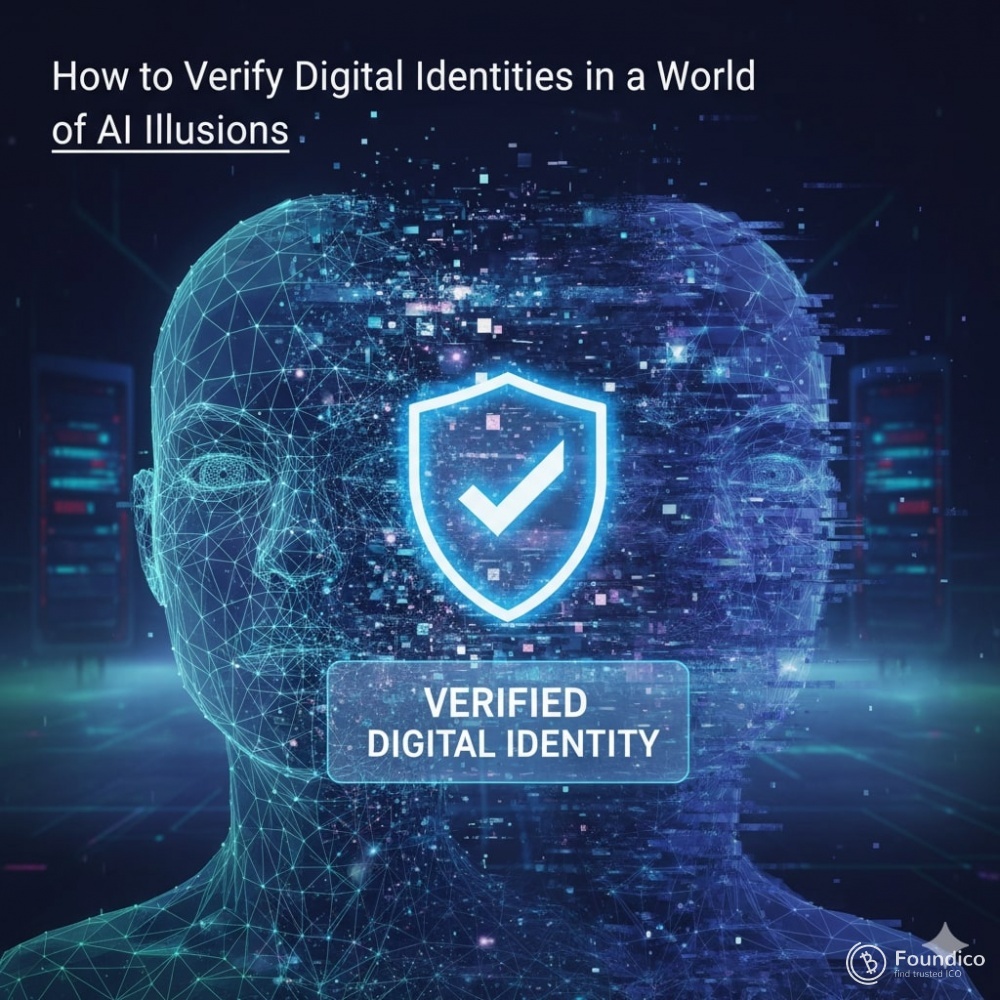How to Verify Digital Identities in a World of AI Illusions

By Dr. Pooyan Ghamari, Swiss Economist and Visionary
The digital realm has become a hall of mirrors. A single photograph can now spawn a thousand lifelike duplicates, a voice recording can impersonate a president, and a few lines of code can generate an entire persona that fools even the sharpest human eye. In this landscape of AI illusions, the question is no longer whether deception is possible—it is already here—but how we can still trust who is on the other side of the screen.
Identity verification must evolve from fragile passwords and static selfies into a resilient, multi-layered fortress. The good news is that the same technologies creating the illusions can also dismantle them, if we deploy them with precision and foresight.
1. Move Beyond the Surface: Behavioral Biometrics as the First Shield
Static data—names, birthdates, ID numbers—can be stolen or fabricated. What cannot be perfectly mimicked is the subtle rhythm of human behavior. The way a person swipes, types, or holds a device leaves a biometric fingerprint more unique than a retina scan.
Keystroke dynamics, mouse trajectories, and even the angle at which a phone is tilted during a video call form a continuous, invisible signature. AI systems can analyze these patterns in real time, flagging anomalies that no deepfake can replicate. A generated avatar might look flawless, but it will hesitate where a human would not, or move with unnatural uniformity.
2. Embrace Zero-Knowledge Proofs: Verify Without Revealing
Traditional verification demands that users surrender sensitive data—passports, driver’s licenses, social security numbers. Each disclosure is a potential breach. Zero-knowledge proofs flip this model: they allow a person to prove a claim (e.g., “I am over 18 and a citizen of this country”) without revealing the underlying evidence.
Built on cryptographic foundations, these protocols are already powering decentralized identity wallets. A user can authenticate to a bank, a voting platform, or a social network while keeping personal details encrypted and off-chain. The verifier sees only a mathematical assurance, not the data itself.
3. Chain of Custody for Media: Timestamped and Immutable
Every piece of digital content must carry an unbreakable provenance trail. Blockchain-based ledgers can embed cryptographic hashes into images, videos, and audio at the moment of capture. Any alteration—however minor—invalidates the hash, alerting systems downstream.
Camera manufacturers and smartphone makers are beginning to integrate this at the hardware level. A photo taken with a verified device is signed instantly; a deepfake, no matter how convincing, lacks this chain of custody and is rejected by compliant platforms.
4. Liveness Beyond the Blink: Multi-Modal Challenges
The old “blink to prove you’re real” trick is child’s play for modern generative models. True liveness detection now combines infrared depth mapping, micro-movement analysis, and randomized 3D challenges. Ask the user to turn their head while a light source shifts across the room; AI avatars struggle to simulate accurate light reflection and shadow physics in real time.
Couple this with voice stress analysis and pupillary response to unexpected stimuli. The human body betrays subtle physiological markers that no algorithm can yet fabricate convincingly under scrutiny.
5. Decentralized Identity Networks: No Single Point of Failure
Centralized databases are honey pots for attackers. Decentralized identity (DID) systems distribute control across blockchain networks, giving individuals sovereignty over their credentials. A university issues a degree certificate as a verifiable credential; the graduate stores it in a digital wallet and presents it to employers without the university ever being consulted again.
Revocation is instant and transparent. If a credential is compromised, the issuer flags it on the ledger, and every verifier sees the update within seconds. No more chasing down outdated records or pleading with bureaucracies.
6. AI as the Guardian, Not the Adversary
The most sophisticated verifier will be an AI trained specifically to detect its own kind. Adversarial networks—where one model generates fakes and another learns to spot them—create an evolutionary arms race that keeps defenses ahead of attacks. These systems must be open-source and continuously audited to prevent backdoors or bias.
Watermarking is another layer. Every AI-generated asset should carry an invisible, standardized marker embedded at creation. Platforms that fail to detect or disclose these markers lose trust and access.
7. Human Oversight in the Loop: The Ultimate Backstop
Technology alone is insufficient. High-stakes verifications—financial contracts, medical consents, electoral processes—require human reviewers trained to spot contextual red flags. An AI might miss that a video’s background noise contradicts the claimed location, but a seasoned operator will not.
A Vision for the Future
Imagine a world where your digital wallet holds verifiable credentials for every facet of life: citizenship, professional licenses, health records, even social reputation scores earned through transparent interactions. You present only what is needed, nothing more. Platforms compete not on data collection but on privacy and security.
The illusions will grow more sophisticated, but so will our defenses. The economy of trust is the next frontier, and those who master verifiable identity will shape the digital century.
We stand at the threshold. The choice is ours: descend into a wilderness of fakes, or build a cathedral of truth.
Dr. Pooyan Ghamari is a Swiss economist and visionary exploring the intersection of technology, identity, and global systems.
